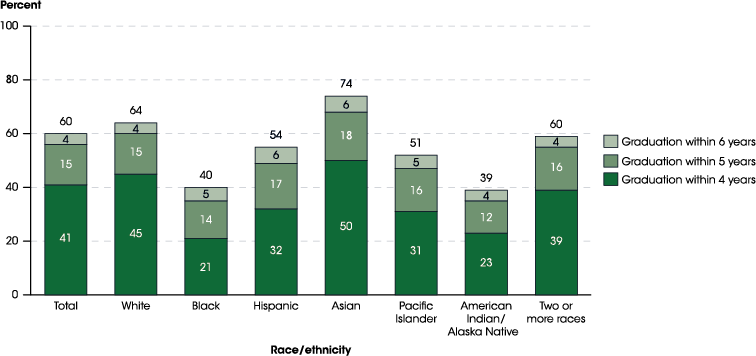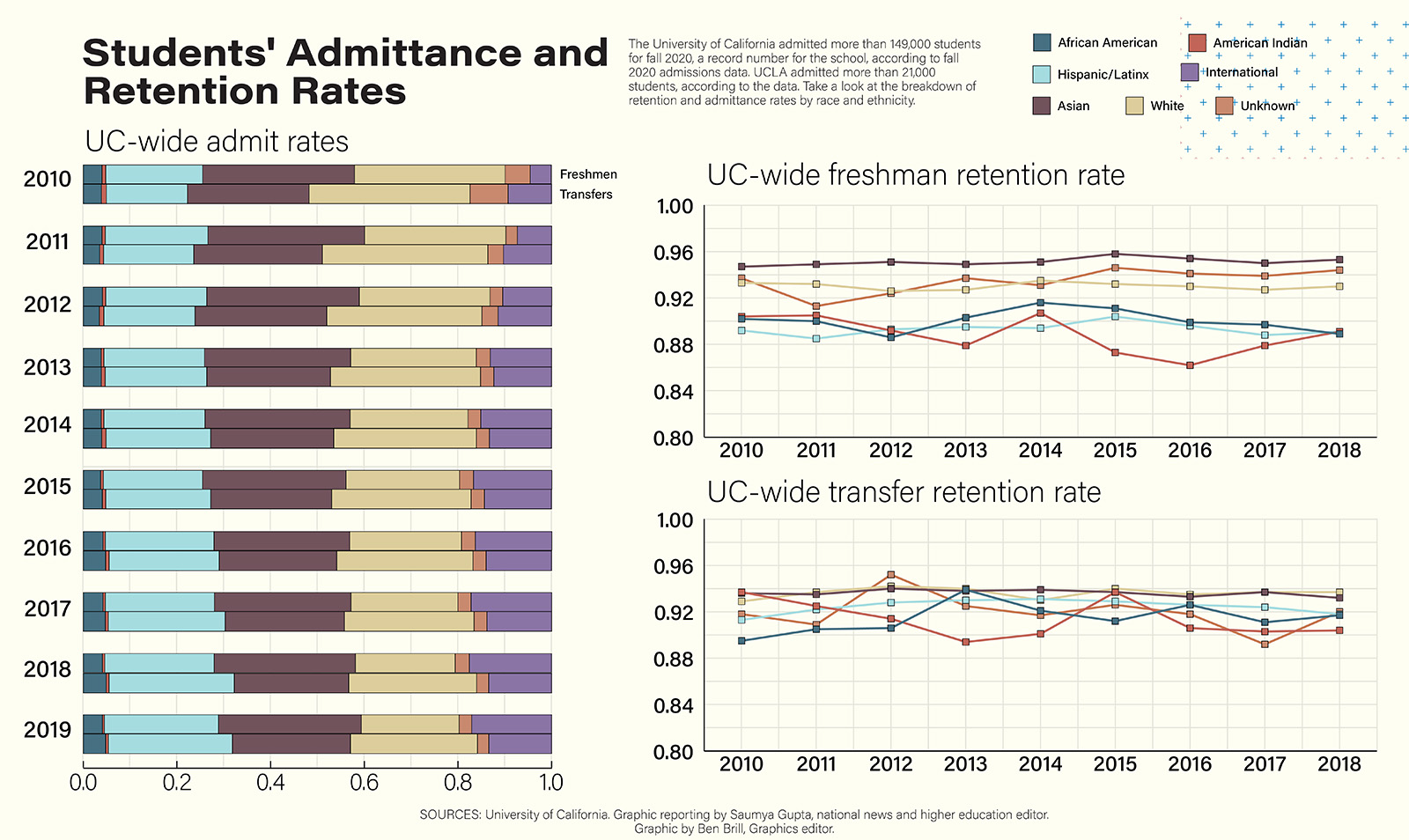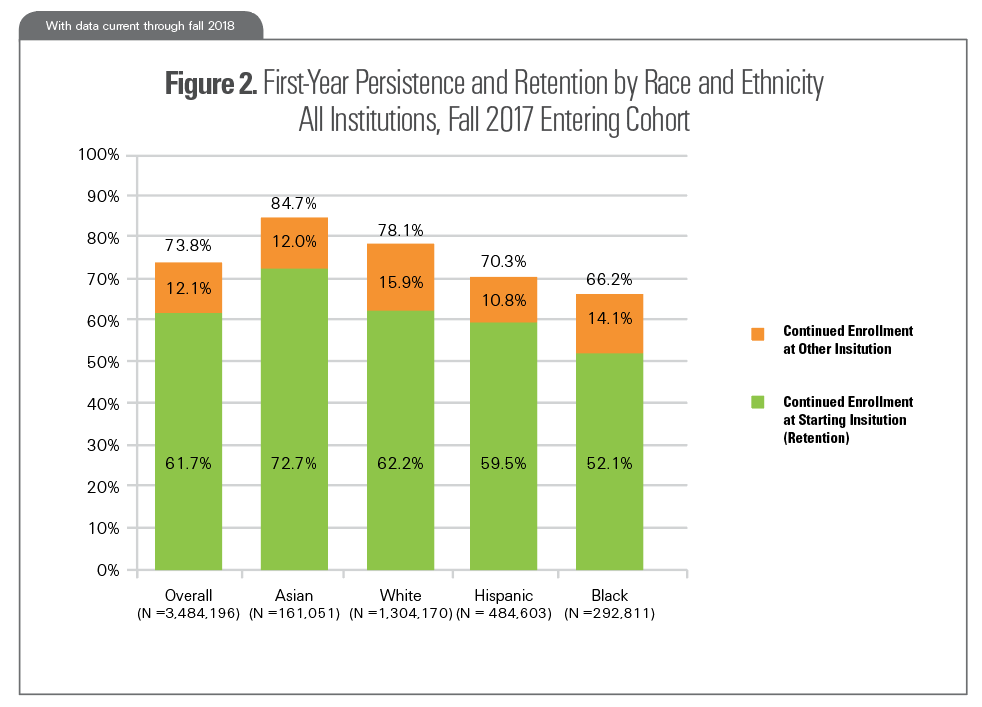College Retention Rates: Boost Success with Strategies
- Update Time : Thursday, May 16, 2024

College retention rates indicate the percentage of students who continue their studies at the same institution from one year to the next. These rates are a crucial metric for evaluating the effectiveness of an institution in supporting student success and academic progress.
Factors such as academic support, financial aid availability, and campus resources can significantly impact retention rates. By analyzing and addressing the reasons behind low retention rates, colleges can implement strategies to improve student persistence and overall success. Understanding and improving retention rates is essential for fostering a positive learning environment and ensuring that students achieve their educational goals.

Credit: nces.ed.gov
Introduction To College Retention Rates
Discover the importance of College Retention Rates in supporting student success and academic progress. Understanding these rates can help institutions enhance support systems for students.
| College Retention Rates |
| Introduction to College Retention Rates |
| The Importance of Retention |
| College retention rates are vital for student success and institutional stability. |
| Improving retention rates can enhance the reputation and ranking of educational institutions. |
| Dropping retention rates indicate a need for interventions and support mechanisms. |
| Current Trends in College Retention |
| Personalized mentoring programs are becoming popular to boost student engagement. |
| Technology integration and data analytics help in identifying at-risk students early. |
Identifying At-risk Students
College retention rates are a critical metric for assessing the success of higher education institutions. Identifying at-risk students is essential for implementing targeted interventions to improve retention rates. Early warning indicators play a crucial role in flagging students who may be struggling academically or personally. Utilizing data analytics allows colleges to identify patterns and trends that can predict which students are at risk of dropping out. By leveraging this data, colleges can proactively provide support and resources to help at-risk students succeed. This proactive approach can significantly impact college retention rates and contribute to the overall success of students.
Enhancing Academic Support
College retention rates are a critical aspect of student success. Enhancing academic support is key to improving these rates. Tutoring and mentoring programs provide personalized assistance to struggling students, helping them grasp challenging concepts and improve their grades. Supplemental instruction offers additional academic support through group study sessions and collaborative learning activities. These programs create a supportive environment that fosters academic growth and helps students overcome obstacles. By providing tailored support and guidance, colleges can significantly enhance their retention rates and ensure that more students successfully complete their academic journeys.
Creating An Inclusive Campus Culture
|
Colleges and universities across the country are taking steps to create a more diverse and inclusive campus culture. This includes implementing initiatives such as:
By actively working to create a more inclusive campus culture, colleges can help to foster a sense of community among all students. This can lead to higher retention rates, as students who feel supported and valued are more likely to stay and graduate. |
Financial Barriers And Solutions
Financial barriers often hinder college retention rates, but solutions like increased scholarships and financial aid can help students stay in school and graduate successfully. By addressing financial challenges, institutions can improve student retention and ensure more individuals complete their higher education journey.
| Financial Barriers and Solutions | |
|---|---|
| Scholarships and Aid Programs | Financial Literacy Education |
| Many students struggle to pay for college due to financial barriers. Fortunately, there are solutions available to help alleviate some of these barriers. One such solution is scholarships and aid programs. These programs offer financial assistance to students who meet certain criteria. Students can apply for these programs through their college or university. Another solution is financial literacy education. This education helps students understand how to manage their finances and budget their money effectively. By learning these skills, students can better navigate the financial barriers of college and increase their chances of retention. | Financial literacy education is crucial for college students. By learning how to manage their finances, students can avoid debt and better focus on their studies. Financial literacy education can cover topics such as budgeting, credit management, and student loans. Colleges and universities can offer financial literacy courses or workshops to their students. Students can also seek out resources such as online courses and financial advisors. By taking advantage of these resources, students can gain the skills and knowledge needed to overcome financial barriers and succeed in college. |
Leveraging Technology For Engagement
Online learning platforms offer flexible and interactive tools to engage students. These platforms provide access to course materials anytime, anywhere. They also enable peer collaboration and communication with instructors. Mobile apps for student success offer convenience and personalized support. These apps provide access to academic resources and real-time feedback. They also offer task management and study tools to improve productivity. Leveraging technology for engagement can improve college retention rates by enhancing student satisfaction and performance.
Student Life And Retention
College retention rates are influenced by various factors, including student life. Extracurricular activities and clubs play a crucial role in enhancing the overall experience for students. Engaging in these activities can foster a sense of community and belonging, which is essential for student retention. Additionally, residential life also significantly impacts retention rates. Providing a supportive and inclusive residential environment can contribute to a student’s decision to stay enrolled in college. It is important for institutions to recognize the importance of these aspects and invest in creating a vibrant campus life to improve retention rates.
Evaluating Retention Strategies
| College Retention Rates |
| Evaluating Retention Strategies |
| Measuring Success |
| Continuous Improvement |
Effective strategies are crucial for boosting college retention rates. Tracking progress is essential to determine success. Consistent evaluation enables ongoing enhancements in retention methods.
Case Studies: Successful Retention Programs
College retention rates are a crucial factor in assessing the success of higher education institutions. Case studies of successful retention programs provide valuable insights into the strategies that have effectively improved student persistence and completion.
Community colleges have innovated by implementing targeted support services, such as academic advising and mentorship programs, to enhance student engagement and success. These initiatives have proven to be instrumental in boosting retention rates and fostering a supportive learning environment.
Similarly, four-year institutions have embraced best practices including early alert systems and peer support networks to address the diverse needs of their student populations. By implementing holistic support mechanisms, these institutions have successfully enhanced student retention rates and graduation outcomes.

Credit: dailybruin.com
Conclusion: The Path Forward
Moving forward, addressing college retention rates is crucial for enhancing student success. Implementing personalized support systems and proactive interventions can pave the way for improved retention outcomes. By focusing on student needs and fostering a supportive environment, institutions can navigate the path towards higher retention rates.
| College Retention Rates: Ensuring student success is crucial. Key Strategies: Personalized support, early intervention, and fostering a sense of belonging. Commitment to Ongoing Support: Regular check-ins, mentoring programs, and access to resources. |

Credit: nscresearchcenter.org
Frequently Asked Questions
What’s A Good Retention Rate For A College?
A good retention rate for a college is typically 80% or higher. This indicates strong student satisfaction and support.
Are College Retention Rates Declining?
College retention rates are not universally declining. Factors like student support services and academic programs can impact retention rates positively.
What Schools Have The Highest Retention Rates?
Schools with the highest retention rates include Harvard, Yale, and Stanford. These top-tier institutions prioritize student support and engagement. This fosters a strong sense of community and academic success.
What University Has The Lowest Retention Rate?
The university with the lowest retention rate is Southern University at New Orleans.
Conclusion
As colleges focus on improving retention rates, key strategies include personalized support, engaging programs, and mentorship. By addressing challenges students face, institutions can enhance student success and satisfaction. Emphasizing a sense of community and belonging contributes to higher retention rates and overall student achievement.


















Thank you for your sharing. I am worried that I lack creative ideas. It is your article that makes me full of hope. Thank you. But, I have a question, can you help me?